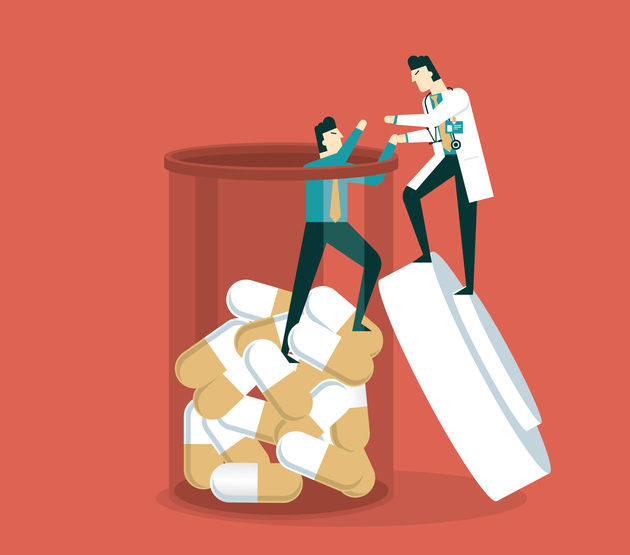
Medications that treat opioid use disorder (OUD) — such as methadone, buprenorphine and extended-release naltrexone — are life-saving drugs that have been proven to decrease opioid overdoses by more than half. However, 86.6% of people who have OUD are not receiving these medications, according to a study published Thursday in the International Journal of Drug Policy.
For the study, researchers at NYU Grossman School of Medicine analyzed two databases: a publicly available one that tracked the dispensing of OUD medications by licensed methadone clinics and a private one that tracked prescriptions filled for buprenorphine and extended-release naltrexone. Through their analysis, they found that although the use of medications for OUD has more than doubled over the last 10 years, the use of these medications is still far too low to keep up with the opioid overdose fatality rates that have been soaring during the past decade — a trend driven mainly by the rise of synthetic opioids like fentanyl.
When the researchers looked at the data state-by-state, they found utilization of medication for OUD varied significantly. OUD medication treatment rates were at their lowest in South Dakota and highest in Vermont. But even in states with the highest rates of use, at least half of people who could benefit from OUD medications were still not receiving them.
There are three key ways to address this problem, Noa Krawczyk, the study’s lead author, said in an interview.
One is by relaxing tight regulations on methadone dispensing. Methadone is one of the most effective ways to treat OUD, according to Krawczyk, but the medication can only be dispensed from licensed opioid treatment programs (OTPs). She pointed out that about 80% of U.S. counties do not even have an OTP. When it comes to expanding access to methadone, providers and harm reduction advocates pretty much have their hands tied, as federal law stipulates that the medication can only be dispensed through these programs.
This is not the case in other countries, Krawczyk noted. For example, in the U.K., patients can receive a prescription for methadone from their physician and pick it up at the pharmacy, just as they would obtain any other chronic medication. Having a similar system in the U.S. would make the life-saving medication much more widely available, Krawczyk said.
Another change the U.S. healthcare system should make to increase access to OUD medication is removing the special waiver requirements physicians need to prescribe buprenorphine. In order to prescribe buprenorphine in this country, providers need the X waiver, a requirement mandated by Congress in 2000 that necessitates physicians receive a day’s training before they can prescribe the drug.
Last year, a bipartisan group of six members of Congress introduced the Mainstreaming Addiction Treatment (MAT) Act to eliminate the X-waiver. The bill cited a National Institutes of Health study that showed France’s opioid overdose deaths declined by 79 percent over a four-year period after the country took similar measures to make buprenorphine prescription possible without a waiver. Krawczyk said passing this bill would not only free up bureaucratic hurdles, but also eliminate “the sense that buprenorphine is a very complicated treatment when it’s really not.”
The final change needed to increase access to OUD medication is expanding the deployment of these medications in mobile health clinics and community-based organizations, as well as within the criminal justice system. In order to accomplish this, the medical community will have to work on decreasing stigma around OUD, Krawczyk declared. She pointed out that many providers have stigma against people with OUD because they were never trained to understand the condition in medical school.
“If you work at any hospital or community clinic, you’re going to run into patients with substance use disorders,” Krawczyk said. “So it’s really pretty disgraceful that we don’t spend more time training our doctors about this. Opioid use disorder is the only chronic disorder that’s treated in this way — no other chronic medications require a special license or have to be provided in these specific settings.”
Photo: sorbetto, Getty Images















